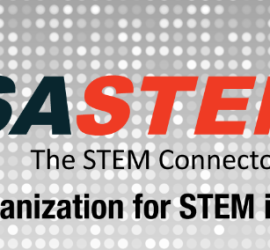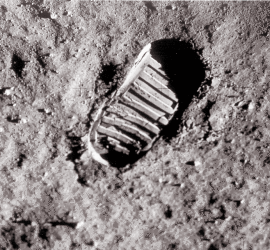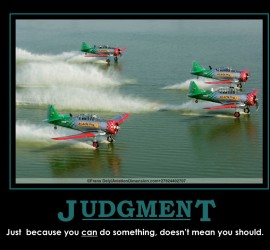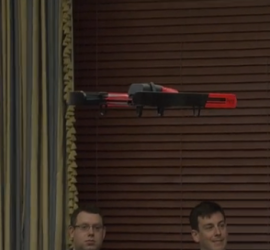Let’s look at the new year as an opportunity for a new start in your career. And think of yourself as the owner or pilot of your own career. After all, if you aren’t in charge of it, who is?!
What I’m really recommending is to think and act like an entrepreneur—even if you are (and want to be) an employee in another company.
If this argument is too abrupt or controversial for you, I hope you’ll stick around. At least for this post, because I’m going to give you a powerful tool that many entrepreneurs and startups are using to be successful in their highly uncertain, competitive, and fast-changing environments. If you think about it, that describes the environment for everyone today, right? Even employees. Even you I bet. So let’s talk about The Lean Startup and how you can use it to set some meaningful goals in 2015 and make valuable progress no matter what your particular situation or goals.
Is it possible to use the lean startup in aerospace? You bet! I used this approach for several projects in my aerospace career and setting. I’ve seen this approach used in other aerospace programs too. Yes, even in a major aerospace corporation it can be used, effectively. That’s because any new project is really a startup, even when it exists in a large organization.
It’s best if I don’t give you details about my aerospace examples. Not for public consumption, you know. But I can understand if you are skeptical or curious. How about another example of using TLS approach in a big, old, bureaucratic organization? Here is a presentation from a public school teacher describing how she used it in her classroom. If you are a teacher (or a parent of a child in school) you need to watch this video especially!
Diane Tavenner – Lean Startup Conference 2012
The Lean Startup approach has been made popular and famous by Eric Ries. He is the author of the book The Lean Startup, which I highly highly recommend. I’ll link to his website at the end of this blog post. There is too much to explain and describe in a single blog post. But here is one key element that I recommend you use when setting goals for 2015.
One central aspect of TLS is cycling through a Build > Measure > Learn loop. This has similarity to the PDCA loop of Lean and 6 sigma (Plan Do Check Act). But here’s the twist and powerful insight: when in the planning phase, you reverse the cycle!
First ask, what do you want or need to LEARN in 2015?
Then ask yourself, what do I need to MEASURE in order to accomplish that learning?
Then ask yourself, what do I need to BUILD (or DO) in order to gain those measurements?
And that provides you the action plan for yourself in the New Year.
Let’s work through an example.
Suppose you want to get an entry-level job in an aerospace company. Reframe this as something you need to learn: how can someone (someone like me) get an entry-level job in an aerospace company?
Now you need to figure out what measurements are needed in order to gain that learning. Here are some possibilities:
- how many entry-level jobs are there?
- How many entry-level jobs are made available in certain parameters (timeframe, company, geography, etc.)
- How have other current entry-level engineers obtained their jobs? (what measurements can I learn from them?)
- What attributes do aerospace managers look for in entry-level engineers?
There might be other measurements—do the thinking for yourself. I’m just giving you a start.
When you have your list of measurements, from these it should be fairly obvious what actions you need to take or things you need to “build” in order to gain those measurements.
For instance, to learn what the total pool of entry-level jobs is in your city, you’ll need to gather some employer and employment statistics. If you can’t find this out reliably from online searches, you may have to (gasp) call some people or search them out first.
If you want to learn how current engineers have obtained their jobs, you just might have to meet or talk with some of them, won’t you?
If you’ve read my book, this will be a familiar tip to you: one of the best ways to find and interact with the people who can help you with this learning is to find and join a professional society (or more) that hold events in your city. AIAA, AUVSI, SAE, SWE, ASME, AHS…now that you know what measurements you are looking for, you will have a conscious and strategic plan behind your pursuits.
Be sure to remember your people skills and professionalism while you are in pursuit of this learning! Everything in your process should be a part of your learning in fact. Many times when I’ve met someone and tried to learn something about them or from them, I failed or messed up. So I told myself, “well, that didn’t go very well. What can I learn from it? How can I do better the next time?” Sometimes it involved contacting them one more time for an apology, if I got the impression that we had a misunderstanding.
More often (and this is an important thing), I would always follow up with them soon to thank them for talking with me, and express my thanks for meeting them.
It’s also good to keep the focus on them. Instead of asking “can you help me find a job?” you can ask “do you have any needs (or know of any) where someone with my skills and interests would be a benefit?”
If you want more suggestions and examples of how I got better at this, read Tip #10 in my book “How To Be A Rocket Scientist” – appreciate and work on the soft skills.
Through it all, keep the Learn > Measure > Build/Do cycle in mind. If what you are doing isn’t tied directly to gaining a measurement for something that you need to learn in your career pursuit, check yourself and where you are spending your time and energy.
Do you know already what you want to learn in 2015? Share it in a comment below if you are willing to share it. Or if you would like a private master-mind group to work on this plan together, send me a note (after you’ve subscribed to this blog if you haven’t done that yet).
In the comments below I’ll share some of my goals to learn in 2015. Thanks for reading and sharing in the aerospace journey with me. Upward and onward!
The official website of The Lean Startup: http://theleanstartup.com/
The book on Amazon with recommendations for others on the topic: The Lean Startup: How Today’s Entrepreneurs Use Continuous Innovation to Create Radically Successful Businesses





